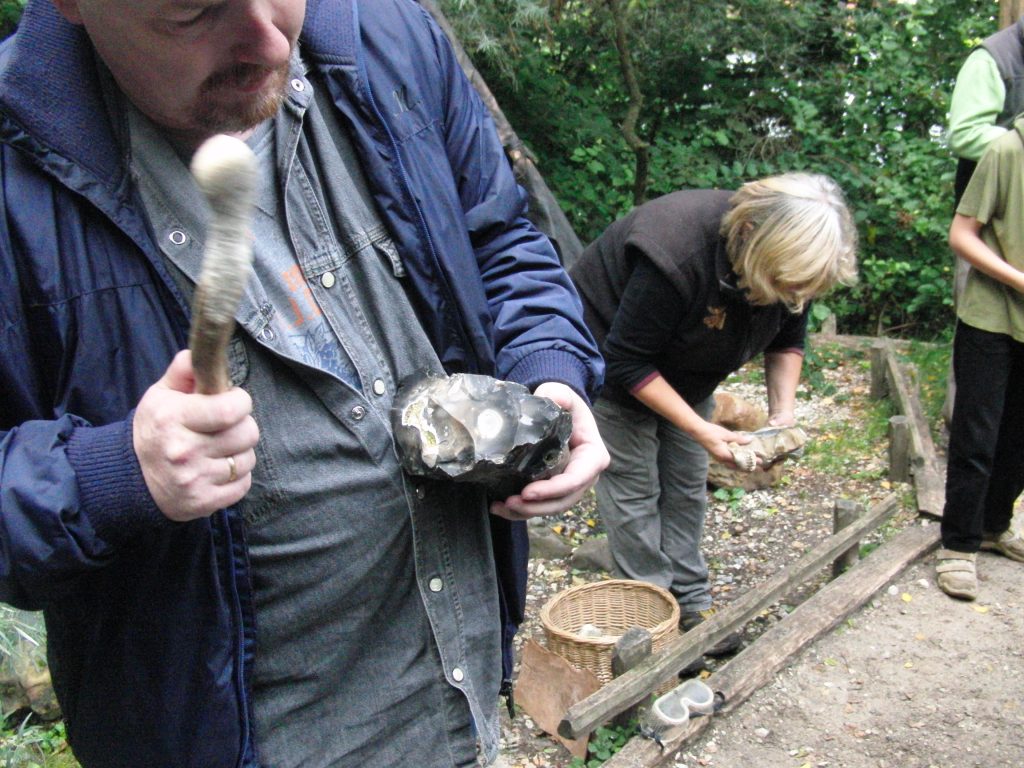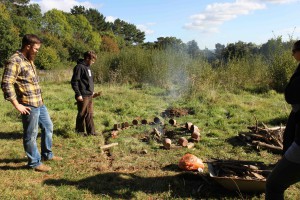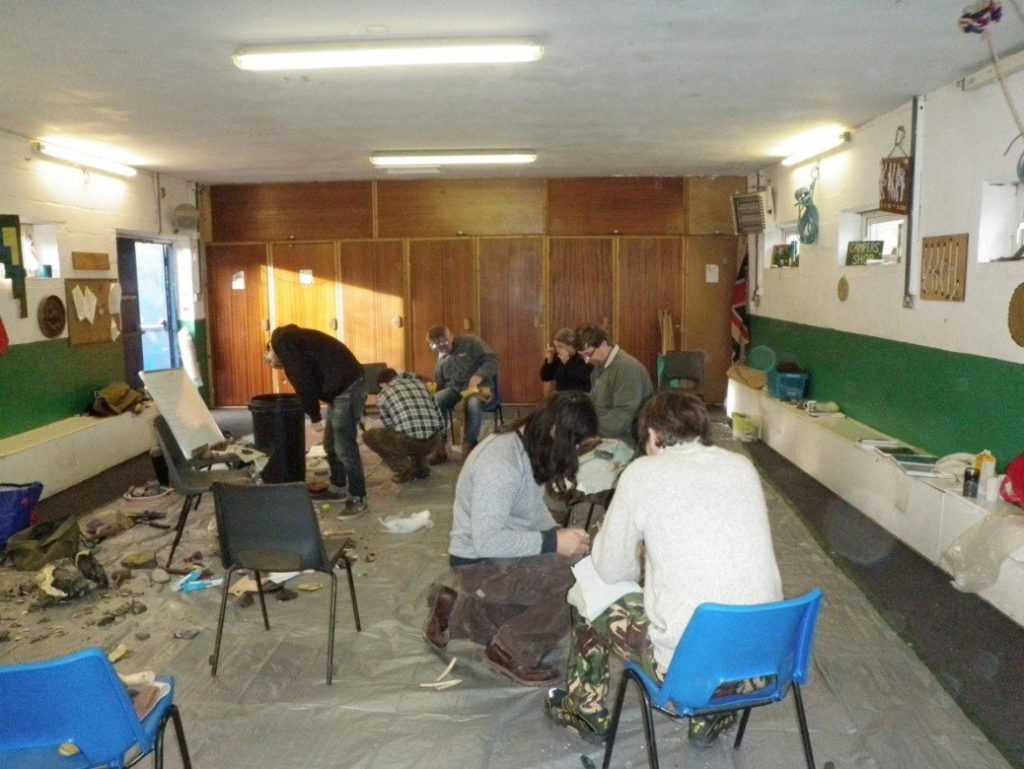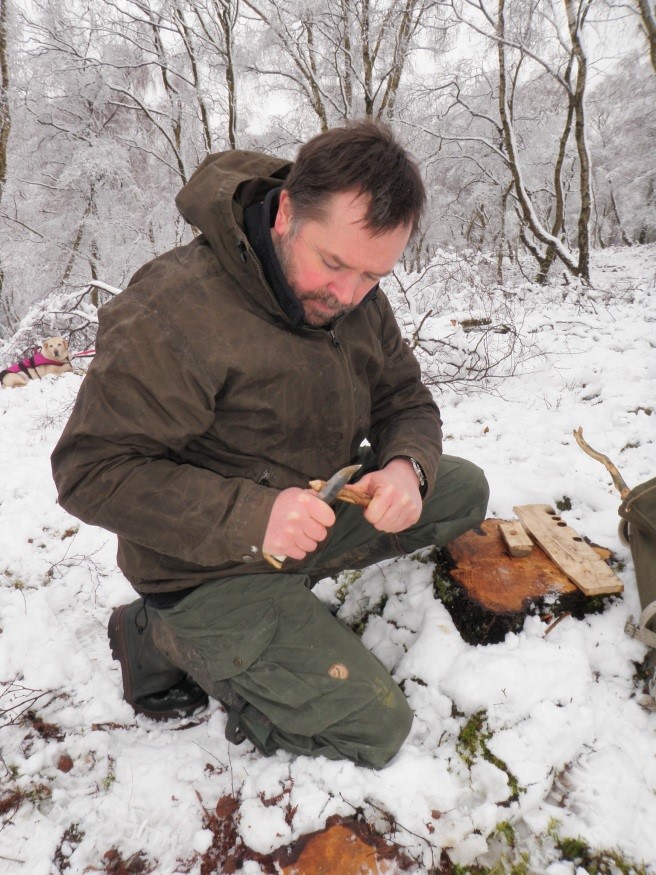My first experience with archaeology was through the Young Archaeologists Club in the Netherlands: as a young teenager, we could actually go excavate every weekend, discover artefacts and document those, while the lead archaeologist would turn all of that into a good story. I remember spending weekends in a castle, cleaning sherds, and trying to reconstruct pots. The best thing was having the area around the castle for ourselves in the evenings. This way of working with archaeology was about getting a personal thrill, a satisfaction, discovering and learning new things. It did not take long until we started explaining to passers-by about the exciting things from the past we had just found out. Maybe we were attention seekers in the beginning, but our stories improved and so did our methods. We learned to try out how we believed people in the past had cooked, fought, worked, not just to test our ideas, but also to tell others.

I then went to university and there it hit me: many people do research (that is what they teach you there), but the question “why do you do this?” is not often asked. Is it personal satisfaction? I got the question at my next university, though. After gaining my MA, I started working in a museum. I was eager to go tell complete strangers about what I had learned at university, from books and excavations. My museum colleagues however had different methods to do research and also different stories with mixed qualities. Now, I learned very fast not to become the Authenticity Police but help these colleagues in doing simple but effective research. It is very important that literature has become more accessible in recent years, and is not monopolized by scientists. Many archaeologists have become more approachable for the public. Even if ten percent of those approaching scientists may be difficult cases, we should not turn ourselves away from the other ninety percent.

These museums are good at quite a lot of things, but if it would be a bit better structured, so much more value would come out of it. I feel that these museums are very much in the air, not linked well with science on the one hand and with the public on the other. So I went back to university, and did a PhD in archaeological open-air museums. On my first day there, I got the question: “do I want to do research to pursue an academic career (ivory tower) or is my intention to use what I learn in the real world?” I believe there are enough archaeologists out there doing research, but if we do not make the insights we gain from that available to the public, then why do research, except for personal satisfaction?
My position, I feel, is in-between: sitting in a museum, I can help get the message across to the public, but without underlying research, these stories are worthless. That is why I am part of an international network, called EXARC. This is an international networking organization for Archaeological Open-Air Museums, Experimental Archaeology, Ancient Technology and Interpretation. EXARC aims to improve professional standards and promote professional ethics. We provide advice, information, practical tools and learning opportunities to our members. We issue publications and provide opportunities for members to meet. Finally, EXARC actively represents the interests of its members.
Experienced people or newbies, all are working with reconstructing the past. Our membership (300 members across 40 countries) includes Lofotr in Norway, Guédelon in France, Saalburg in Germany, and Butser in the UK. We are a very mixed group of people and organisations including scientists, museums, craftspeople, teachers and actors. More information about EXARC, including an open access Journal with hundreds of articles, can be found at: https://exarc.net.

As EXARC director, I facilitate our members, showing them where in our network to find the answers, the resources and ideas for quality research and dissemination. We believe in open access, not only online, but also the chance for outsiders to step into our bubble and ask questions, join us in conferences, workshops or writing their first serious research article and publishing with us. The strength of EXARC is our diversity. We decided very early we do not want to be an exclusive club of museum directors only, but an inclusive network, somewhere at the edge of the establishment and those who rather step off the beaten path.
Our aim is to improve the stories told to the public: not just making sure the latest archaeological research is reflected in the museums and at festivals, but also how professionally these stories are told. One can have a brilliant professor orating for an hour but he should be a good researcher, actor and teacher, all in one person. You do not find such people easily. And there is more to it: it is not just about the Maslow’s hierarchy of needs, which in a museum context means that if there is no good coffee and toilets, people will not be able to pick up the message you try to share with them because physiological needs are not met. It is also about simple things, like you may have a great story to tell, but how do you reach your potential audience, how do you convince them to come and see you?

I started with archaeology because of the great stories about the people who were here before us. I however believe there are much greater researchers and better storytellers in this world. With EXARC, we create the tools; we master the logistics of how to get these stories across. Janus Bifrons was a Roman god. He was the patron of our Young Archaeologists Club; god of beginnings, transitions and endings, he looks in two directions.
I am fully convinced that if you look in only one direction, you will hit your head hard, very hard. We should work together towards a well-informed presentation of the past to the public, with relevance to the present. That is the only way to catch the attention of the audience and enable them to learn something useful from the past.
Roeland Paardekooper is Director of the ICOM Affiliated Organisation EXARC (International Organisation of Archaeological Open-Air Museums and Experimental Archaeology).



